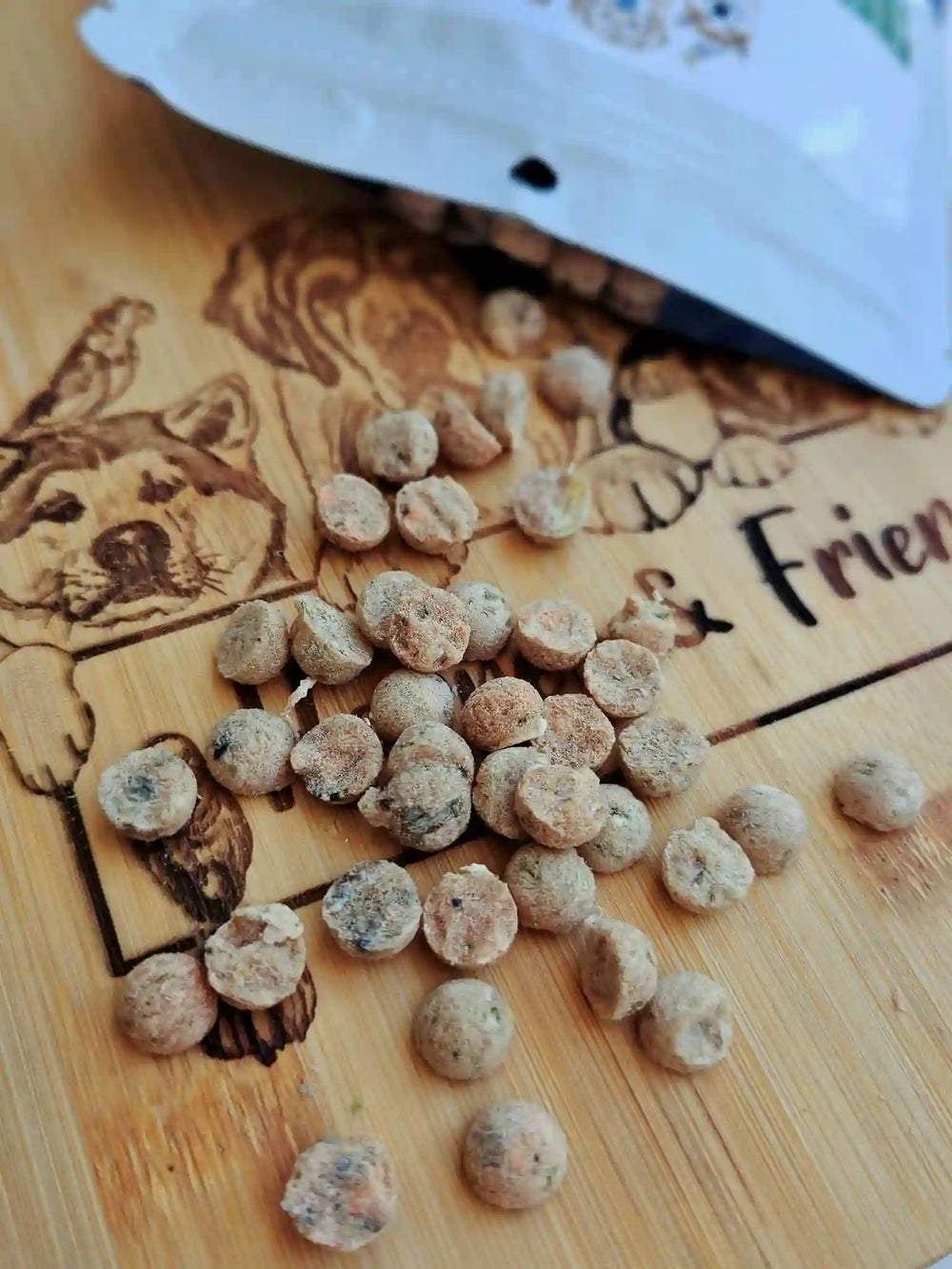Our Freeze-Dried Salmon, Fruit, and Veggie training bites are the perfect bite-sized training treat for dogs of all sizes. They're so yummy, your pup will be barking for more! Plus, they're packed with natural goodness, delivering quality nutrition with every bite.
Our Salmon Dog Training Bites are 80% Wild Caught Salmon, with the remaining 20% being our fruit and veggie blend composed of Broccoli, Artichoke, Red Delicious Apple, and Wild Blueberry, all of which are excellent sources of fiber, essential nutrients, and many phytonutrients.
When coming up with our blend, special attention was paid not only to the amount of fiber, sugar, and starch added but also to the phytochemicals that they provide.
Why Our Salmon Training Bites don’t just contain Salmon:
Calories
Training treats should not be high in calories, and if we did just salmon training treats, each gram would end up being close to 5.5 calories when freeze-dried.
A 20lbs dogs daily treat/supplement/chew/topper allowance, depending on activity, will be between 50 and 70 kcals. At 5.5 kcals per gram that doesn’t allow for many treats.
This makes Salmon, when used by itself, a very poor option for training which by its very nature can be very treat and thus calorie intensive. While the omega 3 fatty acids (EPA & DHA) in salmon are great. Canine Obesity is a real problem and keeping the dog at a healthy weight is of much greater importance than adding in more omega 3’s(EPA+DHA).
Mini Bites are ~.48 kcal per Treat
Bites are ~2 kcals per Treat
Bait Bars are ~ 14 Kcals Per Treat
Fruit and Veggie Blend
Our Fruit and Veggie blend contains many phytonutrients that can be beneficial for all dogs such as Quercetin, Fiestin, and Procyanidin C1 in apples. Oligomeric Proanthocyanidins, Resveratrol, and Myricetin in Wild Blueberries. Glucoraphanin, Zeaxanthin, and Lutein in Broccoli. Apigenin, and Luteolin in Artichoke.
While many think of fruits and vegetables only in terms of antioxidants, and the ability to quench free radicals, the phytochemicals in fruits and vegetables support health in many ways not strictly related to their ability to quench free radicals.
Feeding Instructions
Treats should never make up more than 10% of your dog’s daily calories because it can lead to nutrient imbalances. That is why we recommend also rotating between different treats. Whether the treats come from muscle meat or organ meat. Whether they come from the land or sea. Whether it is cattle, Poultry, Wild Game. They all offer different levels and percentages of important Vitamins, Minerals, types of Fat, and Amino Acids. By constantly rotating treats you ensure that your furry friend gets a wider range of nutrients.














